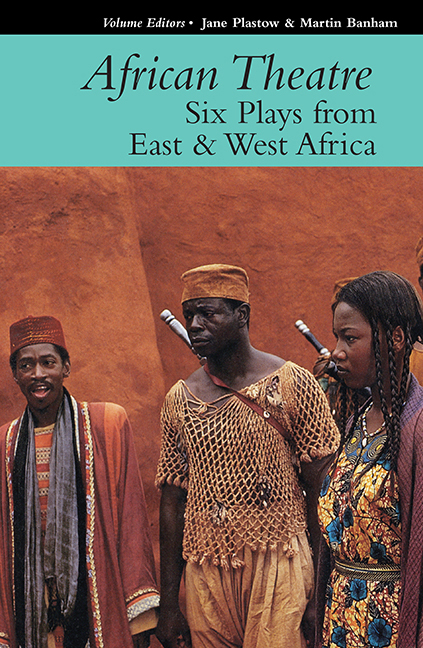Book contents
- Frontmatter
- Contents
- Notes on Contributors
- Obituary: Adieu Alain Ricard
- Preface
- THREE PLAYS FROM EAST AFRICA
- THREE PLAYS FROM WEST AFRICA
- Book Reviews
- Robert Mshengu Kavanagh, A Contended Space – The Theatre of Gibson Mtutuzeli Kente
- Edward Wilson-Lee, Adventures with the Ever-Living Poet: Shakespeare in Swahililand
- Francis Nii-Yartey, African Dance in Ghana: Contemporary Transformations
Francis Nii-Yartey, African Dance in Ghana: Contemporary Transformations
from Book Reviews
Published online by Cambridge University Press: 24 August 2019
- Frontmatter
- Contents
- Notes on Contributors
- Obituary: Adieu Alain Ricard
- Preface
- THREE PLAYS FROM EAST AFRICA
- THREE PLAYS FROM WEST AFRICA
- Book Reviews
- Robert Mshengu Kavanagh, A Contended Space – The Theatre of Gibson Mtutuzeli Kente
- Edward Wilson-Lee, Adventures with the Ever-Living Poet: Shakespeare in Swahililand
- Francis Nii-Yartey, African Dance in Ghana: Contemporary Transformations
Summary
In the introduction to his book African Dance in Ghana: Contemporary Transformations, Francis Nii-Yartey says he hoped that both the student of dance and the general reader would enjoy the edition. The book achieves its aims. It is a highly informative, though not academic book, written by an academic-artist. He draws on his life in dance, as a performer, choreographer and a participant in the development of dance as a profession and academic subject in Ghana. His experience is of one who was trained by leaders who were involved in developing the infrastructure of newly independent Africa. Artists were very much involved in the politics of adapting Western-style institutions to serve Africa needs and vice-versa. We had S.dar Senghor as poet-president, S.kou Tour. launching the first national dance company in Africa and Kwame Nkrumah commissioning Professors Nketia and Opoku to start the national performing arts companies. Nii-Yartey was one of Professor Opoku's first batch of students. He quotes mainly Professor Opoku who was the first artistic director of the Ghana Dance Ensemble. Other than that he conveys in a straightforward manner his knowledge of traditional dance as a practice in Africa and the emergence of ‘The New Paradigm’ – theatrical dance otherwise known as concert dance, in the early 1960s. The foreword by Professor Emeritus, Kwabena Nketia, frames Nii-Yartey's story historically in the heady days of ‘national awakening’ when pan-Africanism was our hope.
After a short introduction to Ghana as a country the book provides us with an overview of traditional dance in Ghana. This is not a list of traditional dances but a description of features and characteristics which are found in a wide range of forms. Most overviews of this kind focus on physical attributes such as the use of flat foot, bent knee and supple spine. This overview reveals some less discussed information such as how traditional dances are formed through dialogue between individuals and the community, the idea of choreography and improvisation, though not described with those terms, in traditional contexts, and how the same dance might appear in different contexts performed to display different qualities depending on whether it is for a funeral or a celebration.
- Type
- Chapter
- Information
- African Theatre 16: Six Plays from East & West Africa , pp. 318 - 319Publisher: Boydell & BrewerPrint publication year: 2017

